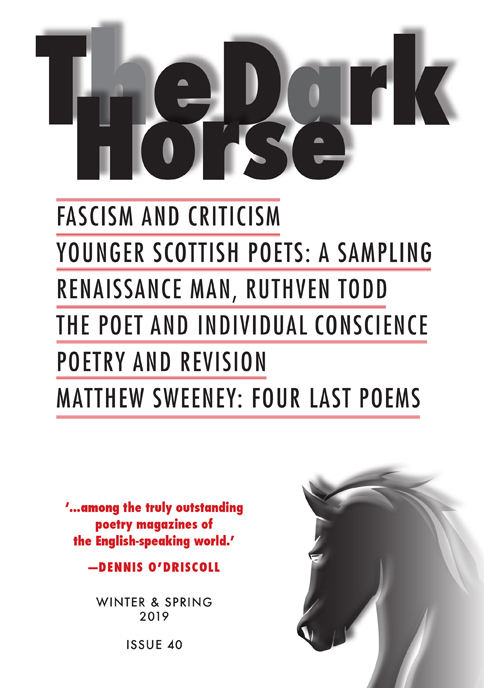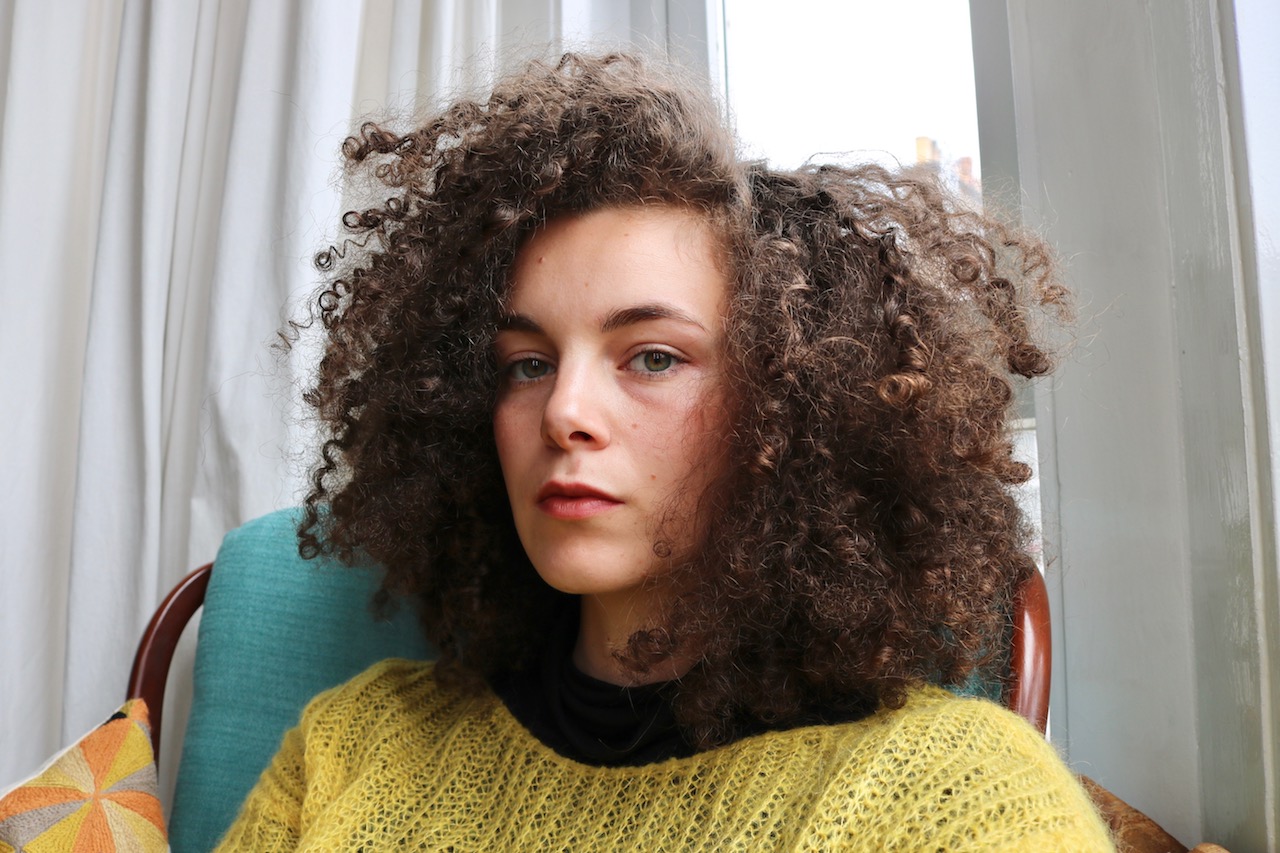From then on she painted childrenand she didn’t paint the sea,even when she lived right next to itand the spray spat against her neckas she stood with her back to the North waves,painting the fields behind Catterline,over and over, with wheat-stems stuckonto canvas, ochre and bovinegrit in the wind. It’s unsettlinghow paint can be so self-absorbed, the thematiccontent wallowing somewhere belowthe surface. Is this why she didn’t paint the sea?Rather: beehives, dye poles, the wholesorry scene of a village’s gutted industry.The occasional figure would approachher there, jellied in time by depiction.To paint someone ‘approaching’is to keep them at arm’s length.Safer this way. The fishermen rememberseeing her at work, how just like themin attire she was, in stocky silhouette. Easellegs clawed into ground, weighteddown with stones. Nothing would deter her,they said. Squall, veering and soon. ≈When the Rottenrow slum kidsclimbed the spiral steps to her studioshe gave them threepence for sweetsand secondhand clothes. The moreyou know a place, the more it givesitself to you. Her father survivedthe trenches, but took his lifewhen the dairy farm failed. She tookto paint. Did he hide it from the animals, too?And anyway, no use crying over—The clothes ill-fitted the childrenand even the paint was too big,sinking black buttons in their bloatedfaces. Both were scratchyand presumptuous; did she know it?A sore neck kept her from lookingtoo long. Up at the urchins, downat the sketchbook. Truth—somewhere between the two? A friendtook photos that she worked frominstead. Turned the Townhead slumsa gouache blue where childrenfloated like doilies. She wantedthe sea cottage and the city slum, both.A woman artist is unfortunate like this,needy and oceanic. An invite to her firstexhibition was billed as a ‘one-man show’.How to offset the romantic burden: establisha framework of realism; absolutely no sea. ≈Not that she cared much for Turner,anyway. Though she did admire Pollock,strew imago dei along the coastal paths.It’s not derivative if you’re far enoughfrom the source. Sometimes she’ddrive her Lambretta inland, to paint sheepin the turnip fields. But mostly she’d turnwiddershins around the bay, the fishermenwatching her watch for structuresto emerge between horizon and land.So what if she did paint the sea, eventually,and the scenes were predictably vast and wild?The point is that for a long time,she didn’t. Every woman artist has a ‘sea faze’that quickly overwhelms all his priorresistance. You don’t have to be parentlessto be an orphan. A body can instil absencewith its presence, and garble your sensesindefinitely. Her eyes like this. Sawsea-blue in the rotting streets, all along.
she didn’t paint the sea
—after Joan Eardley
Feature Date
- June 7, 2019
Series
Selected By
Share This Poem
Print This Poem
Copyright © 2019 by Daisy Lafarge
All rights reserved.
Reproduced by Poetry Daily with permission.

Winter & Spring 2019
Scotland
Editor
Gerry Cambridge
U.S. Assistant Editor
Jennifer Goodrich
U.S. Contributing Editor
Marcia Menter
The Dark Horse was founded in 1995 by the Scottish poet Gerry Cambridge. It is an international literary magazine committed to British, Irish and American poetry, and is published from Scotland.
We like to think that the journal is characterised by a clear-sighted scepticism and an eye for the genuine. We understand that hype, in its presumption of consensus, is irrelevant to readers of any individuality. Not that we equate poetry with solemnity. We are, by turns, or sometimes simultaneously, serious, wry, humorous, iconoclastic.
While we are glad to print poetry in metre and rhyme, we remember Randall Jarrell’s “Where poems have hearts, a metronome is beating here.” We believe that we can recognise poems of sound heart. Not being evangelical or overly partisan, we also print compelling free verse.
We publish, too, a mix of stylish and engaged essays, reviews, interviews, polemics and appreciations. At times these are groundbreaking: our interviews with, for example, Philip Hobsbaum and the poet-scientist G. F. Dutton are the most extensive of their kind available.
We have published new work by established poets including Edwin Morgan, Anne Stevenson, Wendy Cope, Anthony Hecht, Douglas Dunn, Robert Nye, Richard Wilbur, Kay Ryan, Vicki Feaver, Matthew Sweeney and many more, but are at least as proud of our discoveries, whether of individual poems or of poets previously unknown to us.We also love to highlight excellent yet neglected or overlooked figures. The contemporary poetry scene, for all its colour, has a short memory which has less to do with quality than with fashion. We attempt to honour literary quality, not literary fashion.
The Dark Horse is in the tradition of the finest poetry magazines: engaged, at times contrarian, and with a commitment to excellence as we perceive it.
Poetry Daily Depends on You
With your support, we make reading the best contemporary poetry a treasured daily experience. Consider a contribution today.




